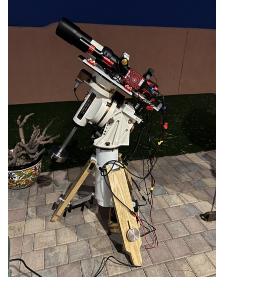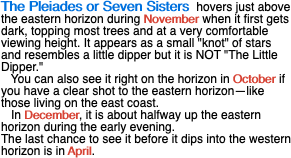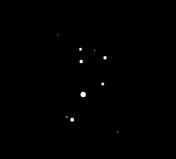 |
|
|
|
||
 |
|||||||||||
 |
|||||||||||
April 6, 2024 I live just east of Tucson, Arizona and I was expecting to drive about 12 hours into Texas to see the total solar eclipse on April 8. However, as I watched the weather reports, the prediction have almost been 100% cloudcover and even some rain later that day. So, I cancelled my trip. Fortunately, I have seen one total solar ecltpse in my life and all I can say is that it exceeded all my expectations. I am the type of person who generally gets disappointed by a movie friends rave about. However, even though I had viewed hundreds of pictures and seens movies about total solar eclipses, the real event was emotionally and visually more stunning than what I expected. If you get the chance and the clear weather, make seeing a total solar eclipse an item on your bucket list! |
|||||||||||
Ken’s Astrophoto of the Month • MArch 2024 |
|||||||||||
 |
|||||||||||
What does it take to take astrophotos? This photo shows one of my setups to image objects in the night sky. This telescope+ is my portable unit and the other unit is too heavy to move and stays under cover in the backyard (my wife hates it there but lets me keep it because she loves me). I am planning to use my astrophoto equipment to revise an earlier book I wrote on the Messier objects. What I want to say is that it takes a lot of equipment to get those astrophotos. If you are thinking about astrophotography, you have to decide if you want to hassle with a bunch of equipment, deal with issues in its performance, and then learn to process the images, which has a very long learning curve. Oh, expect at least a $3000 investment. I would tell people to seriously think about engaging in astrophotography but I understand the hobby challenge. Now, astrophotography is pretty neat and I am enjoying the challenge and fustrations. For, most guys, there is also something about getting all the equipment together and using it to get a result. • • • • • There are 110 “M” catalogue numbers from Charles Messier's catalogue of objects that he compiled in the mid to late 1700s. He was the first person to catalogue clusters of stars, various types of nebulae, supernovae remnants and galaxies—a type of catalogue that was lacking during his time. The NGC catalogue was compiled in the late 1800s and lists over 13,000 objects. Basically, it lists all objects (clusters of stars, various types of nebulae, supernovae remnants and galaxies) visually visible with a telescope around 20 inches in diameter at a dark location. |
|||||||||||
 |
||||||
 |
||||||
The Pleiades sorta looks like a little dipper. It is small in the sky and initially looks like a fuzzy spot to the eyes. Great in binoculars. |
||||||
What’s Out Tonight? is sponsored by Ken Press, publisher of astronomy books and charts. |
||